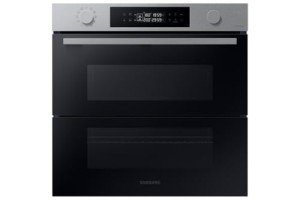Understanding Built-in Range Ovens: A Comprehensive Guide
Built-in range ovens have become a staple in modern-day cooking areas, offering a smooth blend of performance and design. These appliances not just enhance the visual appeal of any kitchen area however also enhance cooking performance. This article will check out the numerous elements of built-in range ovens, including their features, types, benefits, installation factors to consider, and upkeep suggestions.
What is a Built-in Range Oven?
A built-in range oven is an appliance that combines a stove and an oven into a single system designed to be integrated into the kitchen cabinetry. Unlike standalone integrated electric oven and hob , built-in varieties are created to supply a more custom appearance and frequently featured a variety of features that accommodate both amateur cooks and seasoned chefs. These systems can be powered by gas or electrical power, with each type offering different benefits.
Functions of Built-in Range Ovens
Built-in range ovens include a huge selection of functions that add to their popularity. Some of these include:
- Self-Cleaning Options: Many built-in ovens come equipped with self-cleaning cycles, making maintenance simpler.
- Smart Technology: Features like Wi-Fi connectivity and app-controlled cooking programs allow users to handle their ovens from their mobile phones.
- Convection Cooking: Many built-in ovens have convection fans that distribute hot air for constant and even baking.
- Several Cooking Modes: Options such as steam cooking, broiling, and conventional baking provide versatility in cooking techniques.
Kinds Of Built-in Range Ovens
When it comes to built-in range ovens, there are two main types: gas and electric. Below is a contrast of their crucial functions:
| Feature | Gas Range Oven | Electric Range Oven |
|---|---|---|
| Heating Method | Flames produced by burning gas | Electric heating elements |
| Temperature Control | Instant heat control | Consistent and stable heat |
| Installation | Requires gas line | Needs electric outlet |
| Maintenance | Can be more challenging to clean | Usually easier to clean |
| Cooktop Performance | High heat for quick searing | Even heating for baking |
Advantages of Built-in Range Ovens
Built-in range ovens provide numerous advantages, making them an in-demand choice for lots of homeowners. These benefits consist of:
- Space Efficiency: Built-in styles complimentary up counter space, making kitchen designs more effective.
- Aesthetic Appeal: They supply a custom-made, professional aim to the kitchen, incorporating seamlessly with cabinets and countertops.
- Increased Property Value: High-quality built-in appliances can enhance the value of a home.
- Boosted Cooking Experience: Features such as convection cooking and smart innovation make cooking more satisfying and efficient.
- Energy Efficiency: Modern built-in ovens frequently use energy-saving innovations which decrease power consumption.
Setup Considerations
Correct installation is crucial for built-in range ovens. Here are some important aspects to consider:
- Space Requirements: Measure the offered area in the kitchen to ensure that the built-in oven fits flawlessly within cabinets.
- Electrical/Gas Connections: Ensure that the correct connections are available. For gas ovens, a gas line must be accessible; for electric ovens, a devoted circuit is required.
- Ventilation: Adequate ventilation is vital, particularly for gas designs, to prevent the accumulation of harmful gases.
- Expert Installation: It is advisable to have the oven set up by an expert to comply with safety standards and manufacturer standards.
Maintenance Tips
Maintaining a built-in range oven is vital for its longevity and performance. Here are some suggestions to keep your device in top condition:
- Regular Cleaning: Clean spills and stains right away to prevent them from ending up being tough-to-remove residues.
- Self-Clean Cycle: Utilize the self-clean function frequently to keep the interior.
- Inspect Seals: Inspect door seals to guarantee they are airtight and replace them if needed.
- Expert Servicing: Schedule regular maintenance talk to certified service technicians to guarantee optimum efficiency.
Frequently asked questions
What sizes do built-in range ovens come in?
Built-in range ovens generally are available in standard widths of 24, 30, and 36 inches. It is necessary to determine your kitchen area to choose the appropriate size.
Are built-in range ovens more pricey than freestanding models?
Yes, built-in range ovens tend to be more expensive due to their custom style and setup requirements. However, their benefits frequently justify the financial investment.
Can I set up a built-in range oven myself?
While it is possible for seasoned DIY-ers, it is usually advised to hire a professional for correct setup and security compliance.
How do I pick between a gas and electric built-in range oven?
Selecting between gas and electric mostly depends upon personal cooking choices and the existing infrastructure of your kitchen. Gas cooktops offer immediate heat control, while electric cooktops supply even warming.
Are built-in range ovens energy-efficient?
Lots of contemporary built-in range ovens are developed with energy-saving features, making them efficient choices for the environmentally mindful customer.
Built-in range ovens present a fascinating mix of performance, benefit, and design. Their capability to elegantly integrate within kitchen style makes them an appealing choice for property owners seeking to improve their cooking experience. By comprehending their functions, benefits, and maintenance needs, customers can make informed decisions when purchasing this vital kitchen device. Preparation for appropriate installation and regular maintenance will guarantee that your built-in range oven serves you well for lots of years to come.

